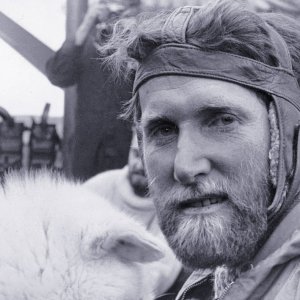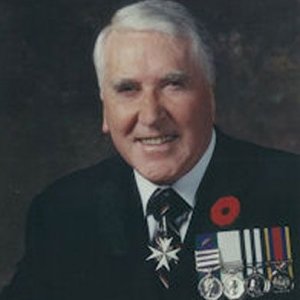- SURNAME
Hedges
- FORENAME
Kenneth
- UNIT
HQ (Regimental Medical Officer)
- RANK
Captain
- NUMBER
- AWARD
Mention in Despatches
- PLACE
Northern Ireland
- ADDITIONAL INFORMATION
parent unit Royal Army Medical Corps
born 17.01.1935
graduated University of Liverpool
graduated London School of Hygiene and Tropical Medicine
M.B.,Ch.B.
22 SAS (RMO) 1964-67
served Malaysia,South Arabia and Northern Ireland
British Trans-Arctic Expedition 1968-69
Senior Specialist in Army Health,Northern Ireland 1969
emigrated to Ontario,Canada
award Commander of the Order of St John
awarded Polar Medal 1970
died 11.10.2023 (Aged 88)
Between Point Barrow in Alaska and Svalbard, a Norwegian archipelago in the Arctic Ocean, lies a stretch of freezing water that was once an unbroken sheet of ice. Years of global warming has since melted large swathes of the 3,800-mile ice cap and reduced it to a sea of shifting floes, making crossing it by foot or sled impossible.
In 1969, the bridge of ice still intact, four explorers made the first and last crossing by dogsled over 476 days in an expedition now billed as “the last great journey on Earth”.
The epithet is only partly a nod to the extinct sea of ice; the explorers represent a lost species of Arctic traveller, with no GPS, satellite communication or weather forecasting, and the shaggy appearance of a 19th-century missionary with biblical, snow-dusted beards and frostbitten hands.
Each member of the British Trans-Arctic Expedition, sponsored by The Sunday Times, was chosen for his experience in wartime courage and leadership. “None were insensitive to fear in the presence of danger,” said Ken Hedges, a physician with the SAS who was appointed the team’s medic. He joined Allan Gill, an explorer, Wally Herbert, the leader of the expedition, and Roy “Fritz” Koerner, a glaciologist.
The odyssey began over Christmas 1967, when Hedges and Gill journeyed some 87 miles across the uncharted Greenland ice cap to the American base at Thule, accompanied by a pack of 40 huskies and a team of local Inuit hunters. In a chilly prelude of things to come they encountered a Danish schoolteacher with hypothermia who had become separated from her group in a blizzard. “We faced a prospect where mishap and cruel choices might dictate our success, our safety or even our survival,” Hedges wrote.
From the base to Point Barrow, the northernmost tip of America, they joined the rest of the team and set off in early February 1968. Each with a sled hauled by ten dogs — it was the first time Hedges, who had no polar experience, had driven one — they headed north through the Beaufort Sea, tackling blizzard-like storms and offshore currents of swirling ice.
The first 60 miles were the most treacherous. “There were no maps, only the unpredictable topography of unstable ice and churning pressure ridges advancing like a wall of lava,” Hedges recalled in an essay for Canadian Geographic in 2020. There was an encounter with a rabid Arctic fox; a fire that engulfed one of the tents; half rations; incapacitating injury and the constant threat of polar bears.
When one attacked a dog, Hedges fired a shot to stop it. The bear dived into the water and resurfaced, jumping on to the ice and nearly knocking him off his feet. He was forced on several occasions to kill bears, and it was never a grief he carried lightly.
By July they approached the North Pole, after crossing nearly 1,180 miles of drifting ice, and pitched their tents in a spot that became known as “Meltville”. The ice stream was moving gradually around the pole, not towards it, as they had hoped, and they were forced to overwinter there, spending five months in complete darkness and in temperatures below minus 50C. Supplies were provided by parachute drops from the Royal Canadian Air Force.
After midwinter the floe on which they were camped broke in two. By February it had shattered, and when the sunlight began to melt the ice they continued on their journey after 235 days in “hibernation”.
On Easter Day they became the first undisputed expedition to reach and return from the North Pole by foot. They celebrated with a warm beef stew. It was not the history they set out to make; this they claimed two months later, on May 29, 1969, when they reached the rocky island of Svalbard and used a radio to transmit a message to the Queen, becoming the first people to cross the Arctic Ocean via its long axis. It was also the longest journey by dogsled in the history of polar exploration, though that too was an unintentional record.
On the final day, as they waited for a helicopter to pick them up a fortnight after reaching land, Hedges lay down on his sheepskin mattress and wrote of hearing “a melodic whistling through the ice”.
As many explorers do, he saw the journey in a romantic, sublime light. “The pervasive silence of the Arctic was transmuted into the pristine farewell song of a whale pod,” he wrote, “as if confirming a universe that did not come into existence by happenstance, any more than our own lives and what we do and how we live are destined to be bereft of significance.”
Publicity of the expedition was overshadowed by the Apollo 11 moon landing in July of that year, but the BBC made a documentary about the trip, Across the Top of the World, the explorers were elected fellows of the Royal Geographic Society and in 1970 were awarded the Polar Medal at Buckingham Palace. The Duke of Edinburgh, their patron, called it “among the greatest triumphs of human skill and endurance”.
Perhaps its greatest legacy is in modern climate science; led by Koerner, the team took readings of the thickness of the ice at regular intervals — a baseline against which models to predict the rate of the melting ice cap is measured. Herbert died in 2007, Koerner in 2008 and Gill in 2010. Hedges was the last survivor of the expedition.
He was born in 1935 in Loughton, Essex, the son of Kathleen (née Hare) and Walter Hedges, a colonial architect who designed parliament buildings in Suva, Fiji, where the family briefly lived before returning to England at the outbreak of the Second World War.
At 14 he left King Edward VI Grammar school in Southampton to join the Imperial Royal Nautical Training College. After a short period at sea in the Far East he left the merchant navy and shortly afterwards was bedbound for several months after a motorcycle accident, in which he nearly lost his left hand and broke a leg and both arms.
Once recovered he decided to study medicine at the University of Liverpool. Upon graduating he was commissioned as a lieutenant in the Royal Army Medical Corps and completed a postgraduate degree at the London School of Hygiene and Tropical Medicine, before being recruited by the SAS in 1964 as a regimental medical officer.
His main task was to train men in providing pre-hospital support for covert SAS operations in remote areas in which medical help was otherwise unavailable. The job took him to Borneo, the South Arabian Desert (now Yemen), east Africa and Libya, and with Nato forces to Germany, the Netherlands and Norway. He worked with Sir Ranulph Fiennes, who became a close friend and in a Sunday Times article in 2019 marking the expedition called Hedges his hero. “Ken was a great man,” he said, “possibly the greatest still alive.”
Hedges resumed his medical studies after the expedition and then volunteered for active duty in Northern Ireland, where he undertook 16 missions during the Troubles to help victims of riot, ambush, sniper fire and improvised bombs, on one occasion rescuing a drunken patron from a pub moments before a bomb exploded (the IRA had issued a warning). Excluding his scraps with polar bears, the only time he used a weapon was to fire shots into the air when a mob crowded around his ambulance to try to seize a wounded soldier inside.
His 12-year career with the British Army concluded in an appointment as senior specialist in army health at headquarters, Northern Ireland, which hosted some 18,000 troops. He was mentioned in dispatches in the Operational Gallantry List of 1974.
A year later he moved to Canada with his wife Dawn, whom he met after giving a presentation at a church in London about his Arctic crossing. With the rank of major he became deputy chief surgeon in the Canadian Forces Medical Service (Reserve) and held several administrative positions in the private and public sector, including mining and petrochemicals, before he returned in 1982 to family medicine. In 1993 he was promoted to the rank of commander in the Order of St John.
He is survived by two sons: Edward, a mental health nurse who lives in Australia, and William, a family lawyer in Canada. Dawn died of breast cancer in 2004.
Later in life Hedges cut an intrepid and mildly eccentric figure. His habit of wandering into town in minus 12C temperatures in a thin jacket and slacks was dismissed by his neighbours as typical British whimsy, but he said the expedition had permanently altered his body thermostat and he did not feel the cold (the wolf-skin parka he wore in 1969 is on display at the Royal Canadian Geographical Society, along with his sled).
The energy that had driven him 3,800 miles across pack ice never dimmed, and every obstacle was a challenge to overcome; his final text message was to instruct his son William on how to check his own son, Nathaniel, for appendicitis.
When he died — peacefully, in his sleep — he had beside his bed his most treasured possession: the map used to plot the route of the Arctic crossing.
“If any journey is to be worthwhile, it must embrace a personal validity,” he wrote. “For there is within us an innate yet vulnerable faculty that seeks an accountable purpose for any and every task we might undertake. This is the human spirit, a vessel of discovery for the meaning of life and how we should live it.”
Source : https://www.thetimes.co.uk/article/ken-hedges-obituary-gv7ndl8cn
Last edited by a moderator:





